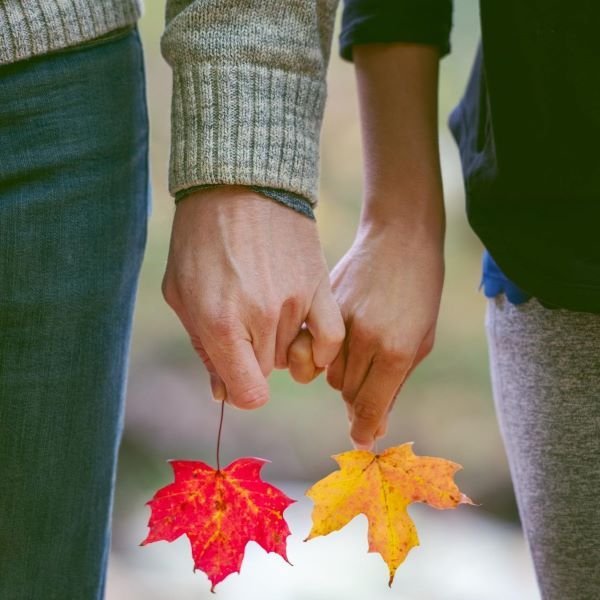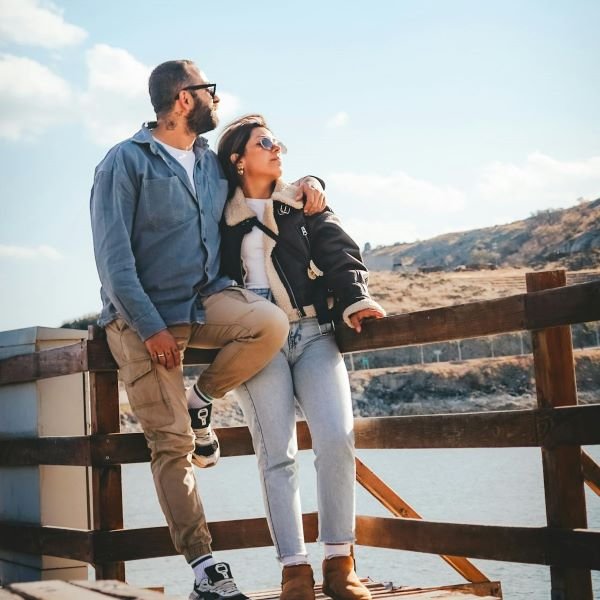Introduction
Initially, my thoughts about attachment styles were like, “Here’s another theory about relationships– something you can read in a psychology book and then promptly forget.” Nonetheless, everything became extraordinarily clear once I started relating those ideas to my own romantic encounters. The recurrent motifs in my experiences, the sorts of individuals I was consistently drawn toward— even the nature of our disputes— none of it appeared accidental. Rather, it all linked back to fundamental issues concerning how we connect emotionally: namely connections; how we handle stress; and how we express a desire for closeness.
Discovering my personal attachment style really shifted things; it changed how I looked at dating! Attachment theory can also provide insights if you ever wonder why certain relationships feel calm– easy even natural! Meanwhile, others come across as overwhelming; confusing or emotionally exhausting. The basic ways people relate to each other are categorized into four styles: secure; anxious; avoidant; and fearful-avoidant (sometimes called disorganized). These patterns shape not only our communication but also things like how quickly we form attachments and what we do when faced with conflict– or separation!
There’s more than just academic interest at stake here: by understanding both your own style plus that of someone else– whether they’re family members, friends, or romantic partners– it may become possible to influence those relationships for the better!
Table of Contents
What Attachment Styles Really Are—And Why They Matter in Dating
Originally stumbled upon attachment theory, but I was startled to learn that secures and insecure attachments being made during childhood influences adult intimate relationships! Sadly things are not so simple– you might feel as though your relationship patterns were decided for you long ago (maybe even pre-date adolescence). But keep reading because there is good news: these styles aren’t set in stone after all. While our attachments do guide us in forming bonds with others– they can also change as we grow older and learn new things (like becoming more aware of ourselves). Learning about your date’s attachment style can be like having a little emotional map.
Rather than wondering randomly why some situations make you jealous, anxious or distant, it helps to understand where those feelings come from. I discovered another side too: with this understanding came greater compassion– both for myself (hey, no fair) and also my partners! And here’s something else I learned: instead of seeing conflicts as just “problems” that popped up out of nowhere, maybe they are patterns? Ones we can work through together when we spot them. Having this kind of insight into relationships can make dating seem less like chaos— more something you do on purpose. At last, I felt I understood the main emotional language I had been speaking all along.

Secure Attachment: The Style Most of Us Want—And Can Develop
At first, when I encountered a person who was securely attached, I found their calmness almost puzzling. Securely attached individuals are quite good at saying what they need– they communicate openly and can handle conflicts without letting things turn into emotional storms. They don’t seem to seek constant reassurance or run away from closeness; they just show up. And especially if you’re someone who tends to worry or avoid getting close, their emotional steadiness can feel like being braced by a friendly giant.
The more I got into secure attachment the more it became clear this wasn’t about being perfect but having consistent emotions, dependable feelings for others, and then working on them! You can actually develop your secure style by practicing healthier communication, respecting your own boundaries, and selecting partners who help create safety rather than confusion making you feel unsafe. Interestingly even dating securely attached people was noticed by me as having an impact– my anxious side sometimes calmed down because I felt reassured instead of left wondering where I stood.
Anxious Attachment: When Dating Feels Like Emotional Overdrive
I sometimes find myself wishing I was less anxious in love– it can be tough. When you date with this attachment style, it feels like there’s always a puzzle: What does my partner really feel? Why did they say that thing? Or why are they quiet? It’s almost like needing to check your phone constantly to see if a message has come through; maybe worrying (when logic tells you this is irrational) that the relationship might be drifting apart because of something you said or did.
No, people with an anxious attachment style don’t lack confidence per se; they are just wired differently, so to speak– being extra sensitive (or hyper-attuned) to any changes in how others feel about them. It’s not about being ‘too much’ or clingy; individuals with this pattern are simply looking for some security back from those they’re close to.
For me personally becoming aware of certain things that would set me off helped along with finding ways of calming myself down rather than always needing other folk to tell me everything will be fine! Anxious individuals do best when they talk openly about their needs explaining them clearly– without making accusations or having meltdowns. If an anxious person things with someone secure they often find greater emotional balance and stability overall too!

Avoidant Attachment: When Closeness Feels Threatening
At times, I have found myself in relationships with individuals displaying avoidant attachment styles. At moments I have even recognized such tendencies within myself. The style manifests as wanting closeness— but at a comfortable distance. Avoidant daters often fear losing independence or feeling overwhelmed.
They may pull back when things get too intimate or shut down emotionally during conflict– it’s not that they don’t care. They simply feel vulnerable when relationships get intense. If you identify with this style it helps to understand that your need for space isn’t wrong. The challenge is finding a balance between independence and intimacy!
Avoidant partners often benefit from slow-paced emotional closeness plus partners who don’t take their space-seeking personally. What helped the avoidant people I’ve dated was learning to express when needing distance instead of disappearing emotionally altogether: communication transforms avoidance into something understandable rather than hurtful!
Fearful-Avoidant (Disorganized): The Push-Pull Roller Coaster
Fearful-avoidant attachment is complicated! I can attest as I have witnessed instances of it. Individuals with this attachment style seem to really want close emotional bonds but concurrently fear them—that is to say, they experience two conflicting desires simultaneously. Such people may want to be near you one moment and push you away the next— which can make dating very confusing indeed because their actions appear at odds with what they truly desire! And for fearful-avoidant themselves, dating often feels like wrestling an opponent inside their head.
If you see yourself in this pattern, the key is compassion— especially self-compassion. Fearful-avoidant attachment isn’t about not wanting love; it’s about having had confusing feelings (emotions) in the past. It helps to take relationships slowly; talk openly about finding emotions hard; pick partners who can provide stable reassurance without pressure! Therapy, journaling tasks from therapists, and exercises meant to build up connections with others over time may also assist in creating emotional consistency!

How Attachment Styles Interact in Real-Life Dating Scenarios
In this whole dating trip of mine, a big surprise was seeing how attachment styles really interact. For instance, anxious and avoidant types are often pulled together; psychologists say there’s something in their patterns that calls out to each other. An example is an individual who intensely desires relationships and another who very much wants independence: they mirror each other’s missed needs. What begins as simple attraction may develop into cycles where one person chases and the other moves away— classic push-pull dynamics!
Research also shows secure couples tend to have greater relationship satisfaction overall because they use more effective conflict resolution strategies- which means less fighting and feeling okay with each other more often. Getting this stuff can stop those mismatches that just zap your feelings. It also helps make sense of why some dating times feel so intense– it’s the dynamic doing that job, not a fault inside you. Consider when I dated an avoidant man; suddenly my anxious ways were through the roof! Not because he disliked me, but as our styles meeting triggered each other’s fears. Once I got this, I started picking people who made my nervous system feel calm instead of fired up.
Moving Toward Secure Attachment—No Matter Where You Start
The good news that really changed my outlook is this– attachment styles aren’t set in stone. You’re not doomed to repeat unhealthy patterns endlessly. I came to see becoming secure differently: It wasn’t about erasing anxiety or avoidance entirely but rather learning how to handle those feelings and select partners who supported my growth. Making a point during conversations, setting practical expectations, and working on regulating your emotions can help individuals like us build healthier relationship habits.
And guess what? You can move toward that secure attachment style too! It’s possible by surrounding yourself with emotionally consistent people. People who date securely model behaviors enabling others to feel safe, respected, and understood. Dating then becomes less about self-protection (although that’s understandable) and more about genuinely connecting with someone– even if it takes a while.

Using Attachment Awareness to Create Healthier Dating Choices
Upon grasping attachment styles, I saw a shift in my dating: it felt more on purpose. Conversations about incompatibility and missing the thrill ceased; as did the pursuit of partners who made me feel low. I began asking different questions, ones that revealed not only if we could get along but also if our emotions fit well. Understanding attachment styles gave me a nice feeling of strength and being grounded, making me more selective in a good way.
Rather than drifting into old habits, I started dating with real clarity. Red flags became easier to spot— not because someone was inherently bad but our attachment needs simply didn’t line up. This knowing helped me remain authentic communicate better and leave situations when required. Ultimately awareness around attachment isn’t about sticking labels on folks- it’s choosing connections that genuinely boost your emotional health.
Conclusion
Attachment styles are like emotional patterns that shape our dating in ways we often don’t notice. When I figured out my own style, dating started to make sense.
Not because everything became easy– but because I had a framework understanding why I reacted the way I did. Becoming aware of your style whether anxious, avoidant, secure, or fearful-avoidant provides you with tools for navigating relationships with more confidence and compassion.
The biggest thing I’ve learned is attachment styles aren’t destiny– they are patterns we can work with! Heal through and grow beyond. The more secure you become, the better your dating feels! You deserve relationships meeting emotional needs encouraging your growth making you feel great!
FAQs
Q1: Can my attachment style change over time?
A1: Yes, absolutely! When you understand yourself better and perhaps have healthier relationships alongside some emotional effort, moving toward a securely attached style becomes possible.
Q2: How do I know my attachment style?
A2: It’s a good idea to look at how you handle closeness, arguments, and feeling far away emotionally. There are also useful quizzes online based on attachment theory– they may give you clues about which style fits you best!
Q3: Is it possible for two insecure attachment styles to make a relationship work?
A3: Yes! It requires patience, good communication, and both partners wanting to learn from each other as individuals- but it can be done.
Q4: What attachment style is the healthiest?
A4: Research suggests securely attached individuals have both stable relationships and with high satisfaction levels– although people displaying other types of attachments (avoidant or anxious) can move towards security too if they work at it!
Q5: Can learning about attachment styles improve my dating life?
A5: Definitely! Understanding your own attachment style gives you clues about why certain relationships don’t work; helps avoid patterns that lead to arguments (or worse); and after a while makes it possible not just to pick better partners but also build healthier things together.



